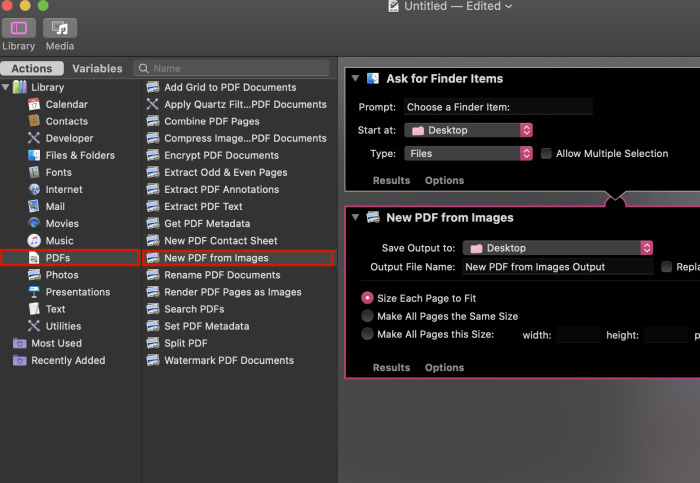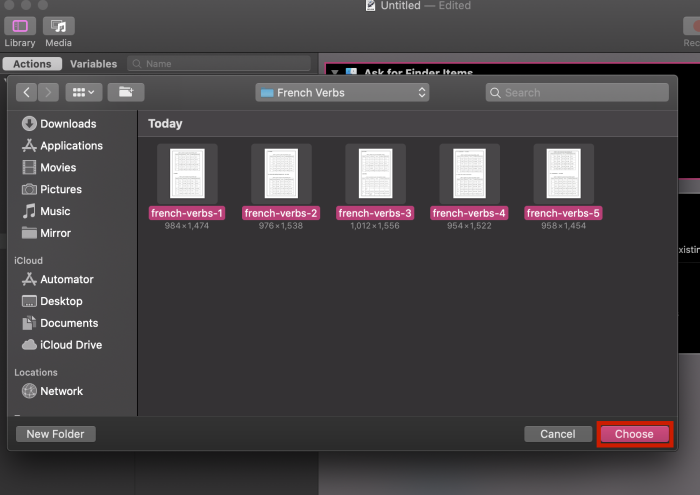Although there’s nothing wrong with using PNG or JPEG files to save data, it’s also recommended to look into PDFs instead.
After all, a single PDF file is less messy than several smaller files cluttering up your desktop. This is especially true for photographed pages that you would like to organize into a single document. Plus, if you were to send something online, a single PDF file is also much easier to send than multiple JPEG files.
Regardless if you’re an office worker, a self-employed professional, or a student, it’s important to know how to combine JPEGs into one PDF on Mac for your own convenience.
Luckily, there are many ways to do this.
Contents
Combine JPEGs into One PDF on Mac
Using Preview
The easiest way to combine images into a PDF on Mac is by using the built-in Preview app.
- Select all the JPEGs that you want to combine into one PDF. There are two ways to do this. You can either drag your cursor over your chosen images, or you can hold down the Command key while selecting only the images you want.

- Once you’ve selected all the files you want, hit the right-click button. A dropdown menu will show up. Click Open With, then select Preview.
- This will open the files in the built-in Preview app, where you can make a few necessary edits. If you’ve accidentally mixed up the order of your files, you can use the drag and drop function at the sidebar to reorder them.
You can also use the Rotate option to change their orientation. Keep in mind that whatever you see on the Preview app will be reflected in the final PDF version.

- If you’re content with the files, hit the Command+P shortcut to bring up the Print dialog. You can also manually click File then Print on the menu bar. You can browse the full set of options in the Print Dialog by clicking Show Details.
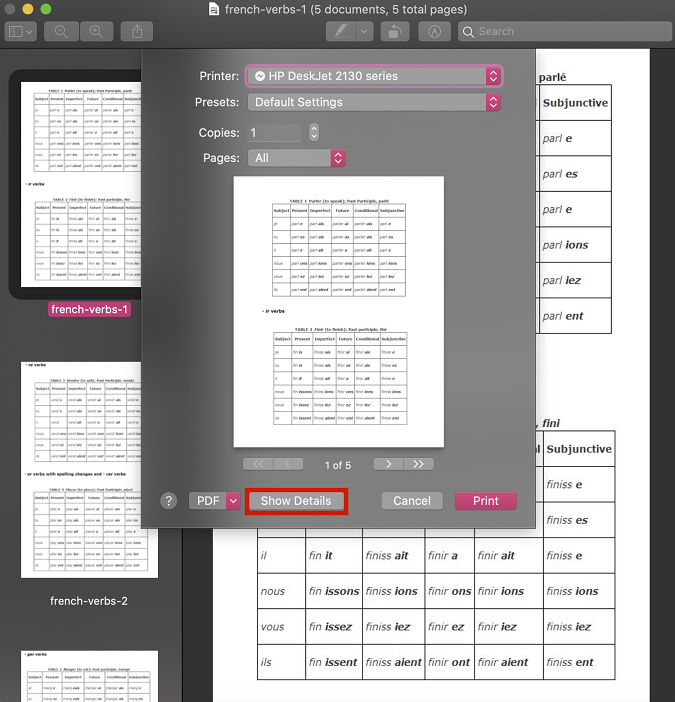
- Select the All button in the Pages option to make sure that all the pages are included. You might also want to recheck the orientation of your images by clicking the arrows.

- After double-checking everything, click the PDF dropdown menu at the lower left and select Save as PDF.
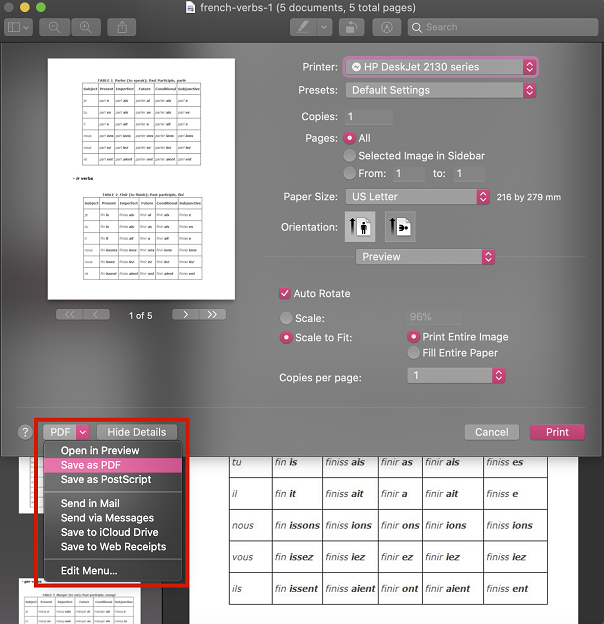
- This will bring up the Save dialog. You can edit the final details of your PDF here, such as the Title, Author, Subject, Keywords, and even the location where you want to save it. You can even set a password via Security Options if you don’t want anyone else to open, copy, or print it.
Don’t worry, there are also options to remove passwords from PDF files in case you change your mind later on.
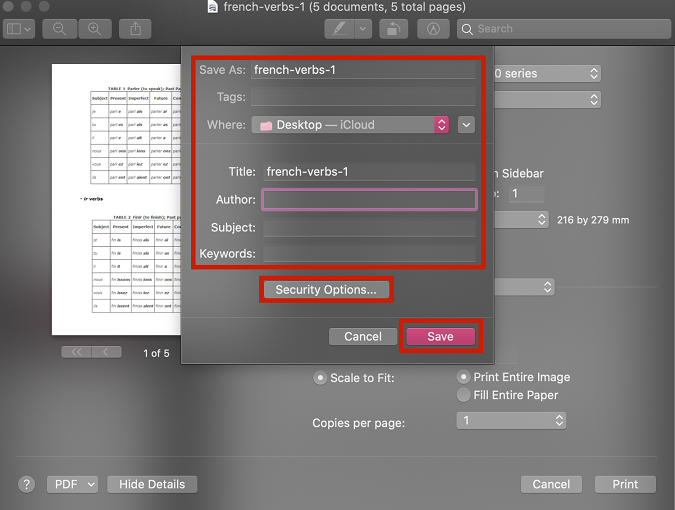
- Click the Save button when you’re done.
Take note that Preview isn’t the only way to combine JPEGs into one PDF on Mac. Actually, any app that can bring up the Print Dialog, like Photos or web browsers, can also combine images into a PDF.
Using Automator
Automator is another easy way to combine JPEGs into one PDF on Mac.
- Open the Automator app from your Applications folder and select New Document.
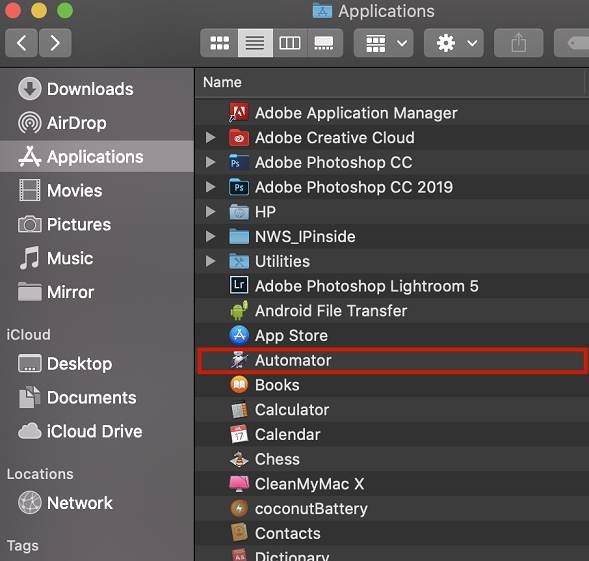
- A new dialog will pop-up. Select Workflow and click Choose.
- In the first panel, select Files and Folders. New options will show up on the second panel. Select Ask for Finder Items and drag and drop it into the third panel.
Make sure to check the Allow Multiple Selections box because you’ll be working with multiple images.

- Go back to the first panel and select PDF. Again, new options will show up on the second panel. This time, select New PDF from Images and drag and drop it into the third panel.
- Click the Run button at the top-right corner to test if it works. You’ll be given the option to select which images you want to include. You can click Command+A to select all images or just hold down the Command key while selecting one by one.
- If everything goes as planned, a PDF file should be waiting for you on your desktop, or wherever you set the save location.
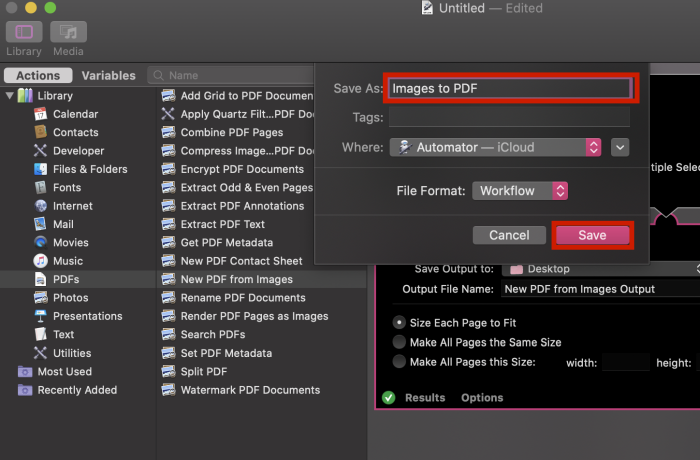
PDF files created with Automator tend to be rather large, so you might also want to compress your PDF later. For now, select File then Save on the Automator window to be able to use this Workflow again in the future.
Using PDFElement
PDFElement is a PDF editor that allows easy conversion from JPEG to PDF. You can instantly combine multiple images into one PDF file just by selecting a few options.
Plus, not only can you edit PDF files on PDFElement, you can even convert PDF into different formats like DOCX, for example. The app is also available for free on both Android and iOS.
Up to 40% OFF to get Wondershare PDFelement PDF Editor version 8 at Wondershare Software. Use coupon code SAFWSPDF during checkout.
Now You Know How To Combine JPEGs Into One PDF On Mac
What did you think of this post? Hopefully, you now know how to combine JPEGs into one PDF on Mac.
After I learned how to do it, I wanted to help others by showing just how easy it is!
If you found this article helpful, please share it with your friends and if you have any other tips about merging multiple JPEGs into one PDF on a Mac, please share in the comments below!


